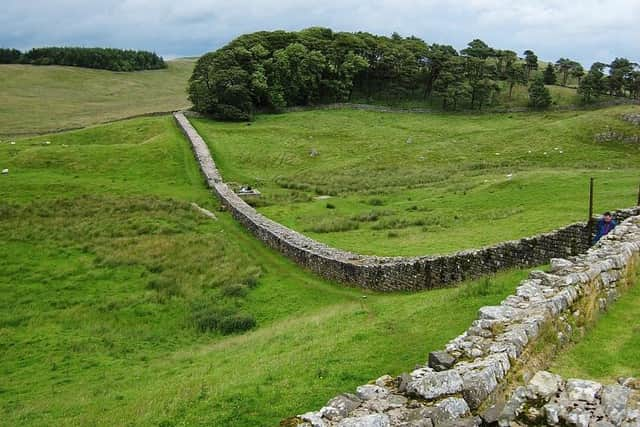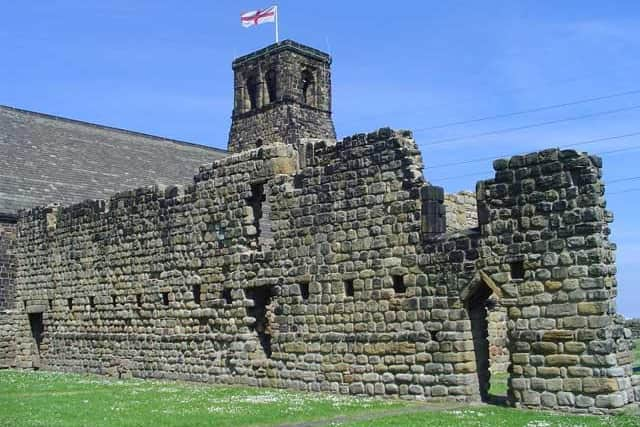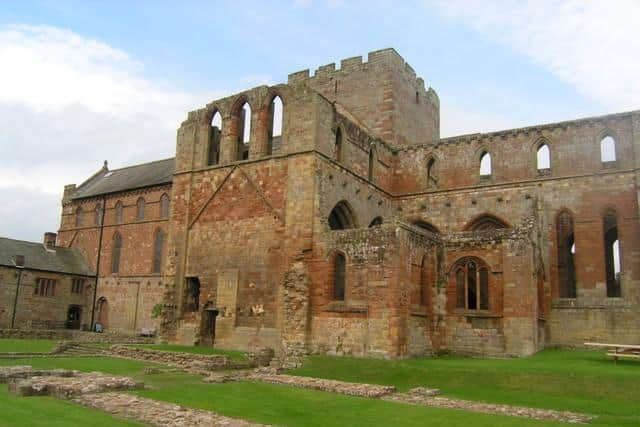The story of how stone from Hadrian's Wall was plundered during the medieval era
For centuries Hadrian's Wall formed an imposing and clear divide between England and Scotland, and, stretching for more than 70 miles from one coast and almost to the other, it also marked the northernmost extent of the Roman Empire.
Of course, the above statement is not quite correct. Although it lies just 0.6 miles from Scotland at its nearest extent, the Roman-built landmark is situated entirely within England.
Advertisement
Hide AdAdvertisement
Hide AdNevertheless, the idea of Hadrian's Wall as a physical emblem dividing two old sovereign rivals remains an attractive one, and this is reflected each year in the large number of Scots tourists who come each year to visit the UNESCO-designated World Heritage Site.
It is recorded that the wall, when originally built in AD 122 in the reign of the emperor Hadrian, was as much as 11 feet high and eight feet wide.
Today, however, the stone-built icon, which included a series of other buildings, including mile castles, forts and baths, is greatly diminished from those early proportions.
Many ask where all the wall's stone vanished to. The answer is really rather simple; it was borrowed, pilfered and reused in the years after the Roman conquest of Britain, which came to an end in the 5th century.
While there is some evidence to suggest the wall was used and even inhabited for a time following the Roman occupation, it eventually fell into disrepair and was abandoned.


Consisting of an immense volume of cut stone, the wall was soon cannabilised for new structures in the nearby towns and villages that it bordered.
Hadrian's Wall Country, which promotes the region around the wall as a tourist destination, states that spolia from Hadrian's Wall was freely plundered for stone to build churches, castles, field walls and farmhouses from the 6th century onwards, while agricultural improvements saw a reduction in earthwork components such as the Vallum ditches and temporary camps.
Spolia
The use of spolia in new structures is not unique to Hadrian’s Wall and the medieval churches of Cumbria and Northumberland, but is common throughout the world.


Advertisement
Hide AdAdvertisement
Hide AdInterestingly, spolia, which refers to building material derived from previous structures, is directly derived from the Latin singular 'spolium' referring to animal hide stripped from the body. The word was later adapted to refer to instances where a defeated enemy was stripped of their arms and armour - hence 'spoils of war'.
Jarrow
Roman stones have been found within St Paul's monastery at Jarrow and likely taken from either Hadrian's Wall or the gateway fort of Arbeia, which marked the eastern extent of Hadrian's Wall in modern-day South Shields.
Jarrow, coincidentally, is the place most associated with Bede, the man credited with being the first to record the history of the English people and the first Anglo-Saxon to record the existence of Hadrian's Wall.


Hexham
Despite being razed to the ground on a number of occasions during its long history, 7th century Hexham Abbey retains a large number of Roman stones throughout its construction. It is thought the church used stone taken from the fort at Coria, now the town of Corbridge.
Lanercost
One of the most impressive examples of the Hadrian's Wall-comprised church buildings is Lanercost Priory, which carries a huge number of Roman stones and many of them bearing Latin inscriptions. One of the stones records the presence of Legio VI Victrix, which was a legion of the Imperial Roman army relocated to Britain by Emperor Hadrian in AD 119.
Some of Lanercost's monastic buildings were pulled down in the 16th century and stone from Hadrian's Wall reused again during the building of a new stately home for the Dacre family.
While Hadrian's Wall is now protected and designated World Heritage Site status in 1987, a handful of modern developments have witnessed the total destruction of areas of the wall.
These include large-scale construction projects, such as the A1 Newcastle western bypass the A69 dual-carriageway and the M6 motorway, as well as several oil and gas pipelines.
Advertisement
Hide AdAdvertisement
Hide AdA message from the Editor:Thank you for reading this story on our website. While I have your attention, I also have an important request to make of you.With the coronavirus lockdown having a major impact on many of our advertisers - and consequently the revenue we receive - we are more reliant than ever on you taking out a digital subscription.Subscribe to scotsman.com and enjoy unlimited access to Scottish news and information online and on our app. With a digital subscription, you can read more than 5 articles, see fewer ads, enjoy faster load times, and get access to exclusive newsletters and content. Visit https://www.scotsman.com/subscriptions now to sign up.
Our journalism costs money and we rely on advertising, print and digital revenues to help to support them. By supporting us, we are able to support you in providing trusted, fact-checked content for this website.
Frank O'Donnell
Editorial Director
Comments
Want to join the conversation? Please or to comment on this article.